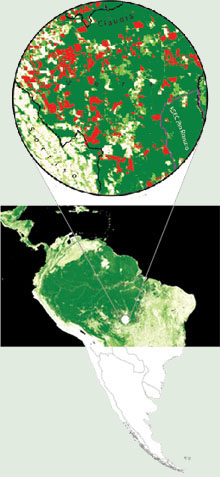Many of Earth's "vital signs" in bad shape
|
More wood was removed from forests in 2005 than ever before, one of
many troubling environmental signs highlighted in the Worldwatch
Institute's annual check of the planet's health.
The think tank's "Vital Signs 2007-2008" report points to global patterns ranging from rising meat consumption to Asian economic growth it says are linked to the broader problem of climate change.
"I think climate change is the most urgent challenge we have ever faced," said Erik Assadourian, director of the Vital Signs project.
"You see many trends in climate change, whether we are talking about grain production which is affected by droughts and flooding, or meat production as livestock production makes up about 20 percent of greenhouse gas emissions," he explained.
Assadourian said the key message of the report was that unsustainable consumption patterns were responsible for climate change linked to carbon emissions and other ecological woes. Of the 44 trends tracked, 28 were "pronouncedly bad" and only six were positive.
The trends range from the spread of avian flu to the rise of carbon emissions to the number of violent conflicts. The growing use of wind power is among the few trends seen as positive.
Some of the points highlighted in the report include:
-
Meat production hit a record 276 million tonnes (43 kilograms or 95 pounds per person) in 2006.
-
Meat consumption is one of several factors driving rising soybean demand. Rapid expansion of soybean plantations in South America could displace 22 million hectares (54 million acres) of tropical forest and savanna in the next 20 years.
-
The rise in global seafood consumption comes as many fish species become scarcer. In 2004, people ate 156 million tonnes of seafood, the equivalent of three times as much seafood per person than in 1950.
-
While US carbon emissions continue to grow, the fastest rise is occurring in Asia, particularly China and India.
Source: Reuters News Service



